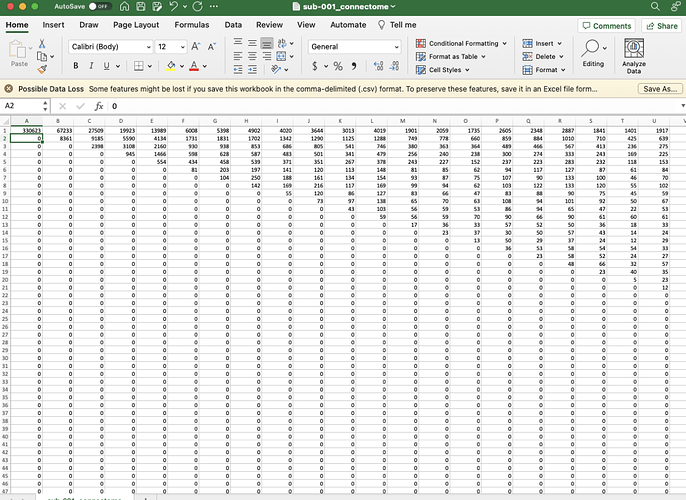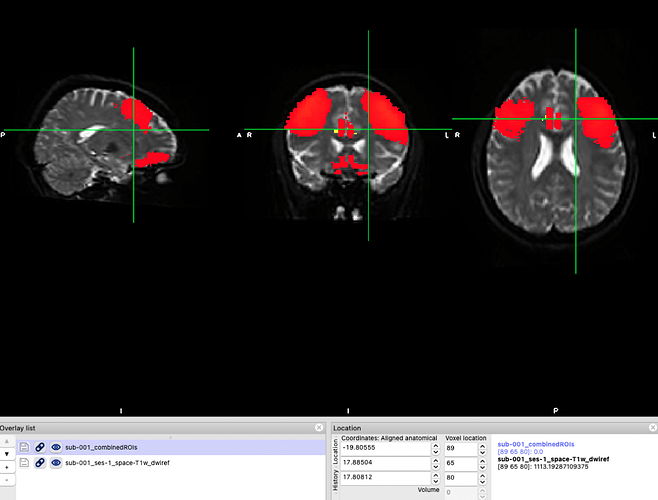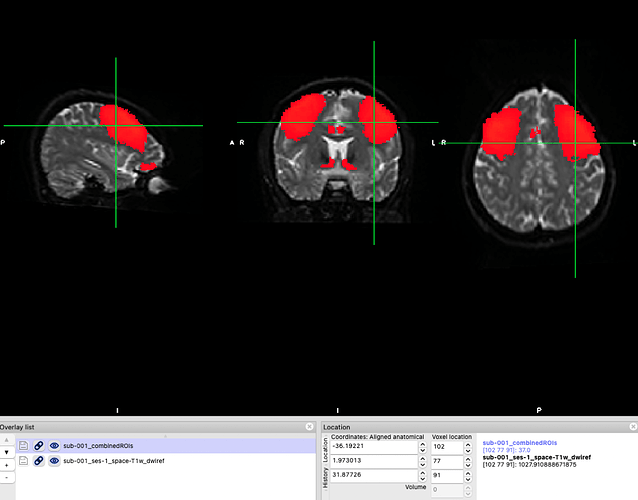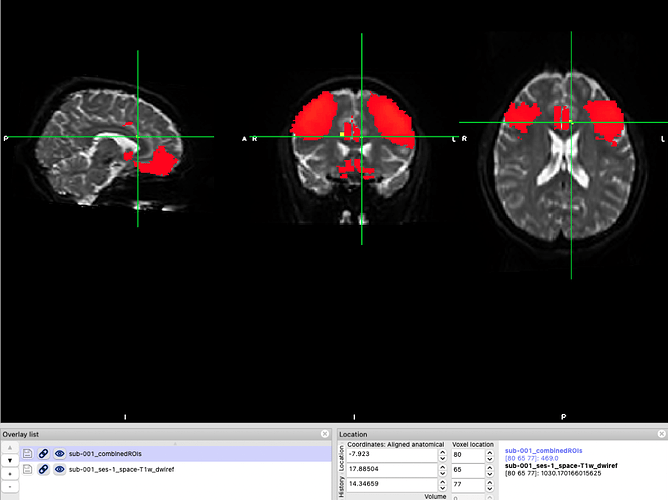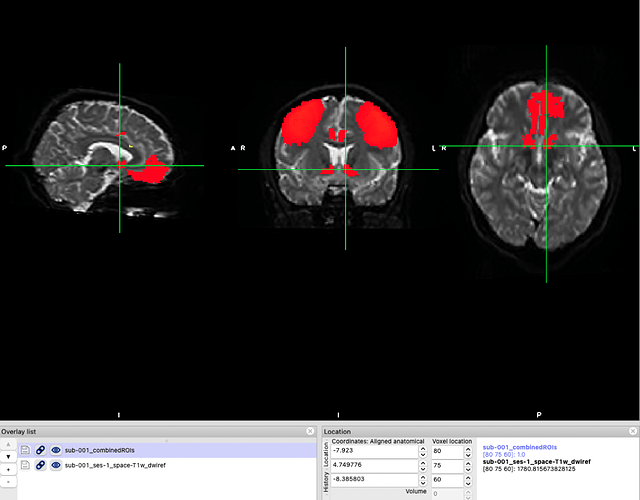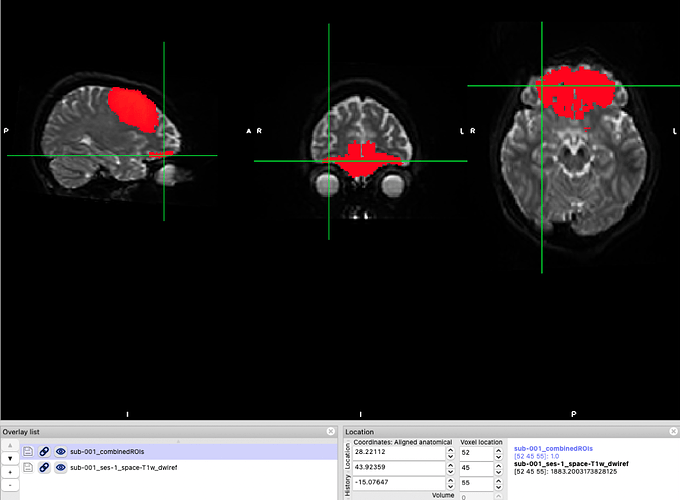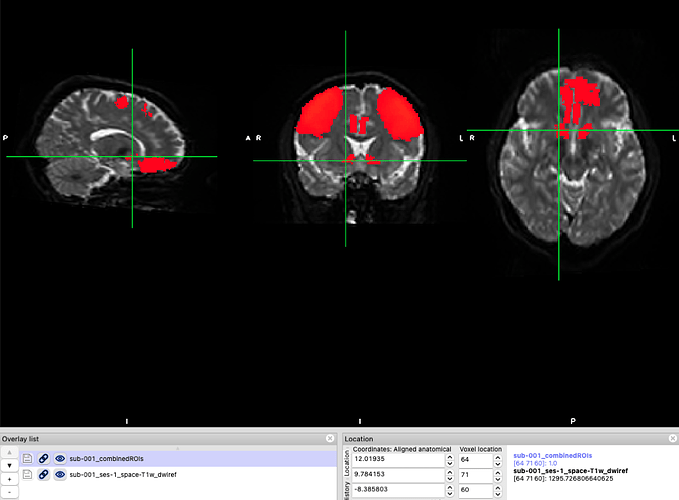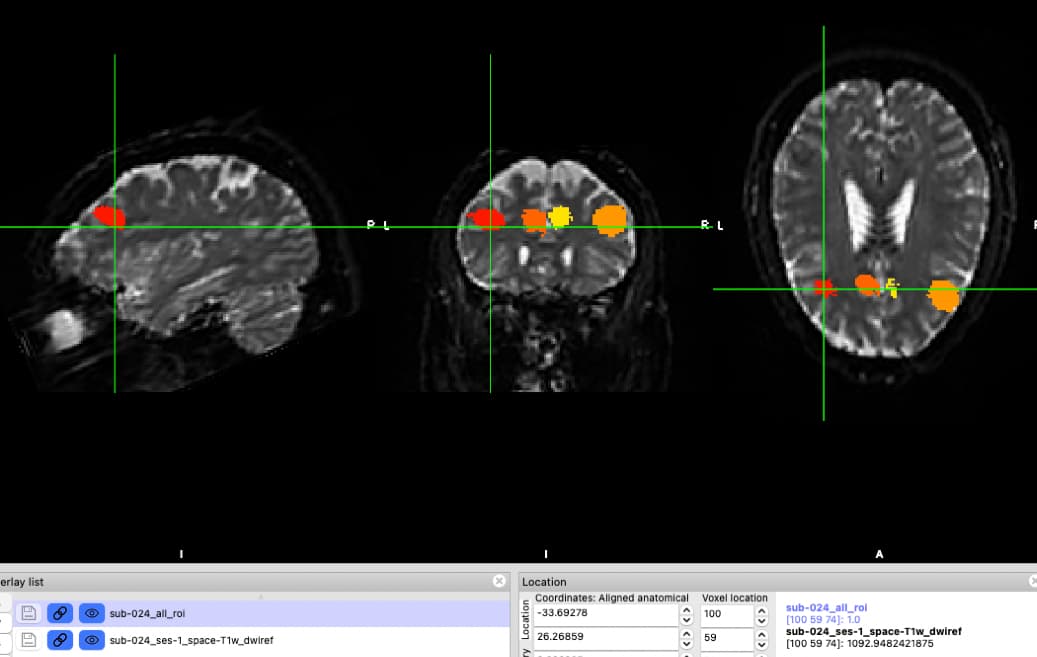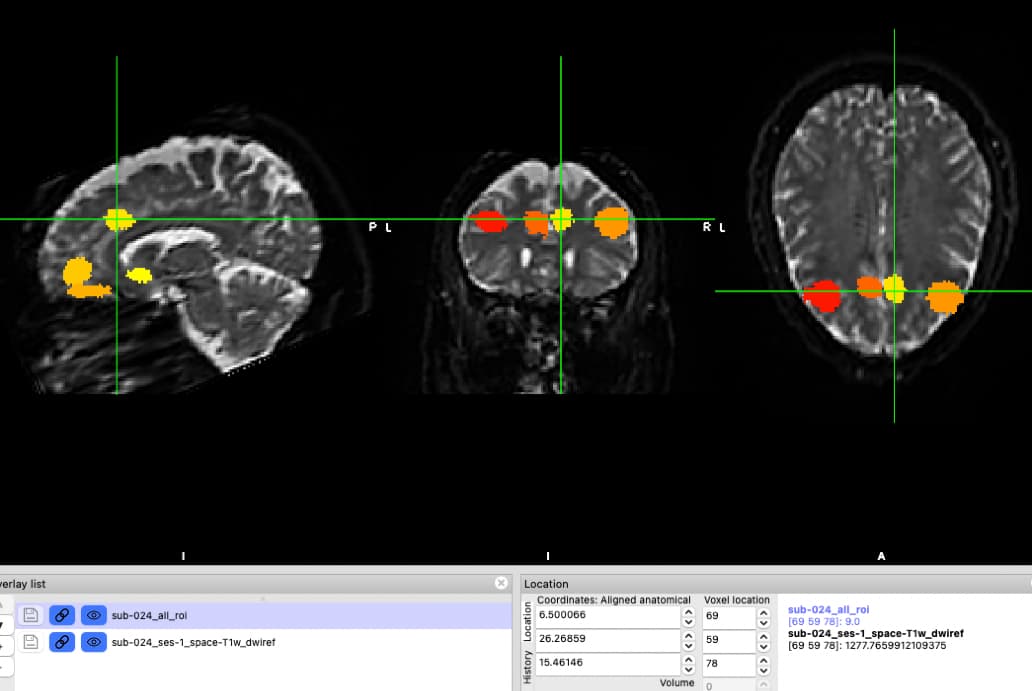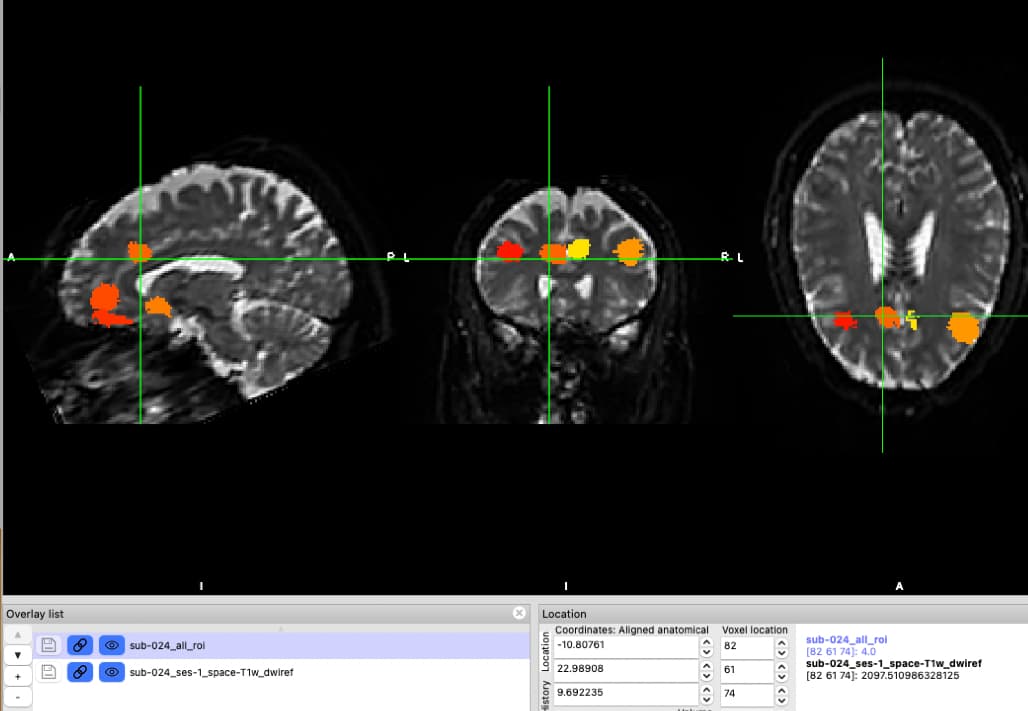Right, sorry - it doesn’t need one to run, but I asked my question about creating my own lookup table because when I run tck2connectome, I see the following:
tck2connectome: Image "/Users/neurouser1/Documents/MSFatigue/T1toDWI/sub-001/ses-1/sub-001_combinedROIs.nii.gz" stored with floating-point type; need to check for non-integer or negative values
tck2connectome: [100%] uncompressing image "/Users/neurouser1/Documents/MSFatigue/T1toDWI/sub-001/ses-1/sub-001_combinedROIs.nii.gz"
tck2connectome: [100%] Verifying parcellation image
tck2connectome: [100%] uncompressing image "/Users/neurouser1/Documents/MSFatigue/T1toDWI/sub-001/ses-1/sub-001_combinedROIs.nii.gz"
tck2connectome: [WARNING] The following nodes are missing from the parcellation image:
tck2connectome: [WARNING] 81, 83, 84, 85, 86, 87, 88, 89, 90, 91, 92, 93, 94, 95, 96, 97, 98, 99, 100, 101, 102, 103, 104, 105, 106, 107, 108, 109, 110, 111, 112, 113, 114, 115, 116, 117, 118, 119, 120, 121, 122, 123, 124, 125, 126, 127, 128, 129, 130, 131, 132, 133, 134, 135, 136, 137, 138, 139, 140, 141, 142, 143, 144, 145, 146, 147, 148, 149, 150, 151, 152, 153, 154, 155, 156, 157, 158, 159, 160, 161, 162, 163, 164, 165, 166, 167, 168, 169, 170, 171, 172, 173, 174, 175, 176, 177, 178, 179, 180, 181, 182, 183, 184, 185, 186, 187, 188, 189, 190, 191, 192, 193, 194, 195, 196, 197, 198, 199, 200, 201, 202, 203, 204, 205, 206, 207, 208, 209, 210, 211, 212, 213, 214, 215, 216, 217, 218, 219, 220, 221, 222, 223, 224, 225, 226, 227, 228, 229, 230, 231, 232, 233, 234, 235, 236, 237, 238, 239, 240, 241, 242, 243, 244, 245, 246, 247, 248, 249, 250, 251, 252, 253, 254, 255, 256, 257, 258, 259, 260, 261, 262, 263, 264, 265, 266, 267, 268, 269, 270, 271, 272, 273, 274, 275, 276, 277, 278, 279, 280, 281, 282, 283, 284, 285, 286, 287, 288, 289, 290, 291, 292, 293, 294, 295, 296, 297, 298, 299, 300, 301, 302, 303, 304, 305, 306, 307, 308, 309, 310, 311, 312, 313, 314, 315, 316, 317, 318, 319, 320, 321, 322, 323, 324, 325, 326, 327, 328, 329, 330, 331, 332, 333, 334, 335, 336, 337, 338, 339, 340, 341, 342, 343, 344, 345, 346, 347, 348, 349, 350, 351, 352, 353, 354, 355, 356, 357, 358, 359, 360, 361, 362, 363, 364, 365, 366, 367, 368, 369, 370, 371, 372, 373, 374, 375, 376, 377, 378, 379, 380, 381, 382, 383, 384, 385, 386, 387, 388, 389, 390, 391, 392, 393, 394, 395, 396, 397, 398, 399, 400, 401, 402, 403, 404, 405, 406, 407, 408, 409, 410, 411, 412, 413, 414, 415, 416, 417, 418, 419, 420, 421, 422, 423, 424, 425, 426, 427, 428, 429, 430, 431, 432, 433, 434, 435, 436, 437, 438, 439, 440, 441, 442, 443, 444, 445, 446, 447, 448, 449, 450, 451, 452, 453, 454, 455, 456, 457, 458, 459, 460, 461, 462, 463, 464, 465, 466, 467, 468
tck2connectome: [WARNING] (This may indicate poor parcellation image preparation, use of incorrect or incomplete LUT file(s) in labelconvert, or very poor registration)
tck2connectome: [100%] Constructing connectome
tck2connectome: [WARNING] The following nodes do not have any streamlines assigned:
tck2connectome: [WARNING] 75, 78, 79, 82
tck2connectome: [WARNING] (This may indicate a poor registration)
My understanding is that if I want to assign streamlines, then I’d need to create a lookup table? Otherwise, I’m not sure what the output columns represent? Let me know if I can/should provide more information - sorry, am very new to this!
